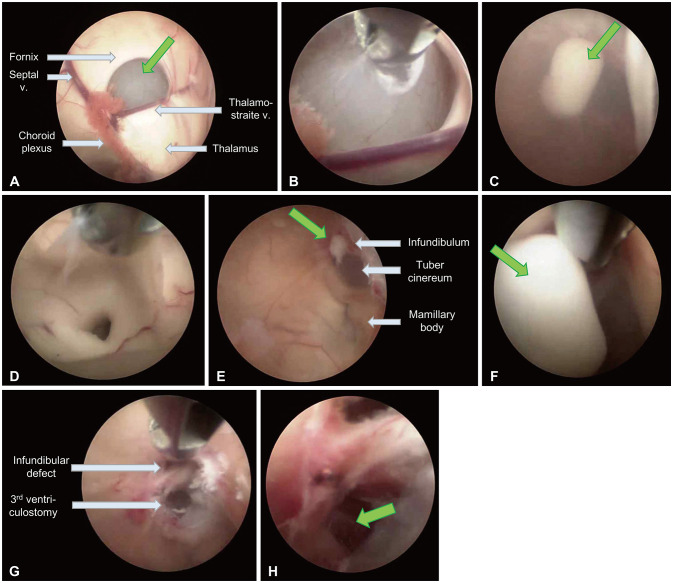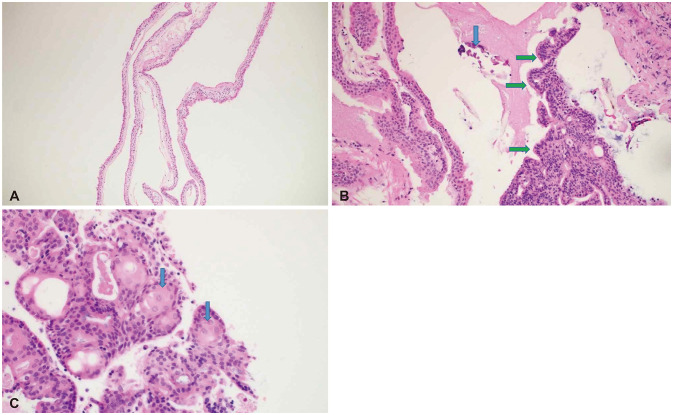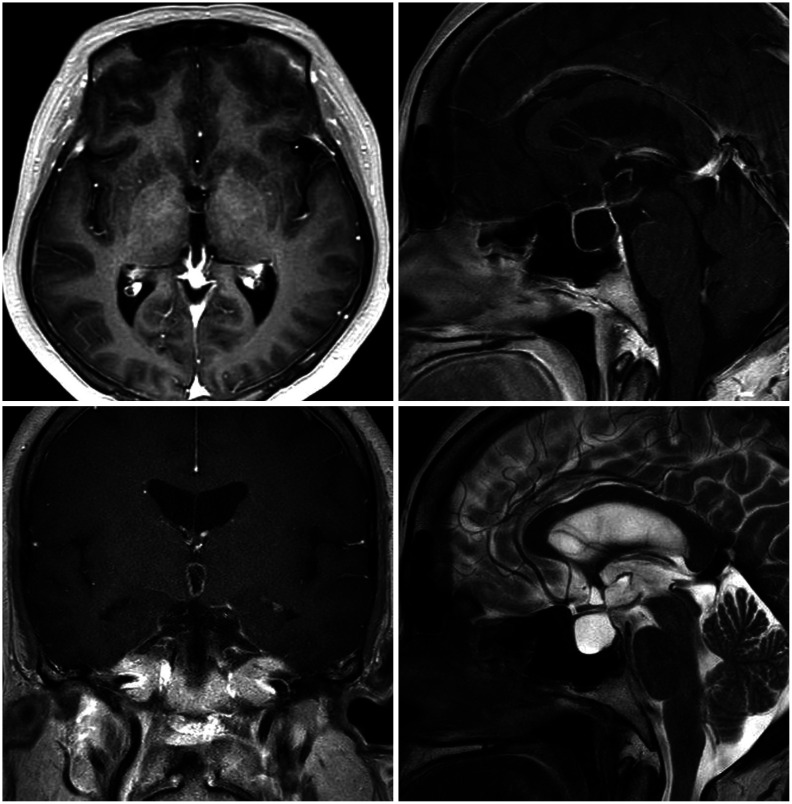Abstract
Notes
Ethics Statement: The Institutional Review Board (IRB) exempted informed consent due to its retrospective nature and minimal risk for harm to the patient, and this report was conducted according to the guidelines of the Declaration of Helsinki for biomedical research.
Author Contributions:
Conceptualization: Kyung Hwan Kim.
Data curation: Han-Joo Lee.
Investigation: Han-Joo Lee.
Methodology: Kyung Hwan Kim.
Project administration: Kyung Hwan Kim.
Resources: Kyung Hwan Kim.
Supervision: Hyon-Jo Kwon, Seung-Won Choi, Seon-Hwan Kim, Hyeon-Song Koh, Jin-Young Youm, Kyung Hwan Kim.
Validation: Kyung Hwan Kim.
Visualization: Kyung Hwan Kim.
Writing—original draft: Han-Joo Lee.
Writing—review & editing: Kyung Hwan Kim.
Availability of Data and Material
References
Fig. 1
Preoperative MRI. A-C: T1-weighted gadolinium enhanced axial (A), coronal (B), and sagittal (C) images show intra- and supra-sellar cystic mass occupying third ventricle with the obstruction of foramina of Monro and aqueduct of Sylvius. C and D: The cystic wall shows a slight enhancement and the cystic contents show isotense signal in T1- and T2-weighted images. Note that arrow indicates the direction of 'reverse' trans-sellar approach.

Fig. 2
Intraoperative endoscopic photographs. A: Foramina of Monro is obstructed by the cyst wall (green arrow). B: A thin cystic capsule was fenestrated using bipolar coagulator and widened by forceps. C: A cloudy cystic fluid spread out, which was a mixture of cerebrospinal fluid and mucinous cyst content (green arrow). D: The cyst wall was partially removed and especially cyst wall fragments covering aqueduct of Sylvius were completely removed. E and F: Whitish mucinous cystic contents (green arrow) spilled out from the sellar cavity through the defect on infundibulum when the sellar compartment was compressed by forceps, and were removed completely. G: Thinned tuber cinereum was perforated and widened using forceps (basilar artery: green arrow); infundibular tissues around the defect are collected for histologic examination as well as widening reverse trans-sellar corridor. H: Endoscopic examination through the infundibular corridor and the site of third ventriculostomy confirmed absence of residual cystic contents and basilar artery, respectively.

Fig. 3
Histopathologic findings. A: The cyst is lined with a single cell layer of ciliated cuboidal or columnar epithelium (hematoxylin and eosin [H&E] stain, ×25). B: The cystic lesion contains eosinophilic mucoid materials with focal calcification (blue arrow); the lesion partly demonstrates the solid proliferation of epithelial cells with palisading columnar cells at their periphery (green arrows) (H&E stain, ×100). C: The lesion shows squamoid epithelial cells with a vague whirling pattern (blue arrows) (H&E stain, ×200).





 PDF
PDF Citation
Citation Print
Print




 XML Download
XML Download